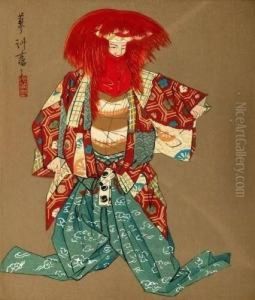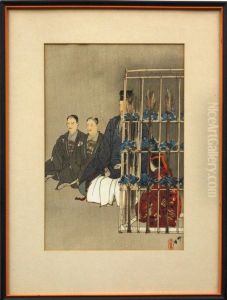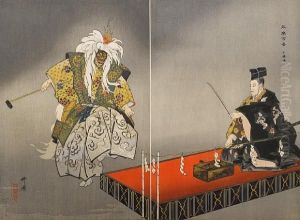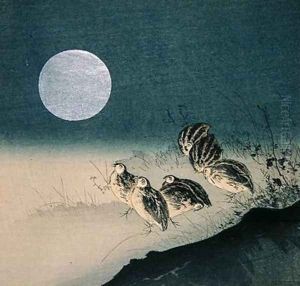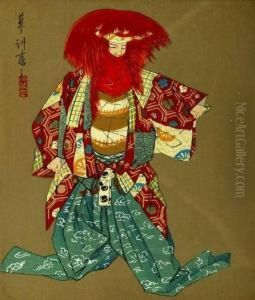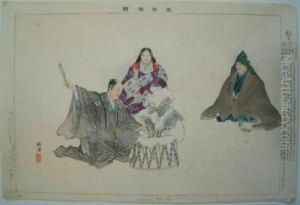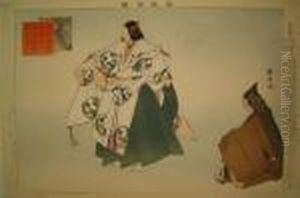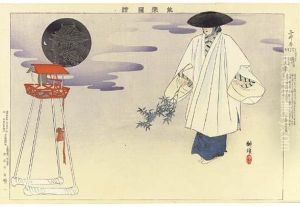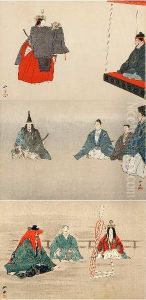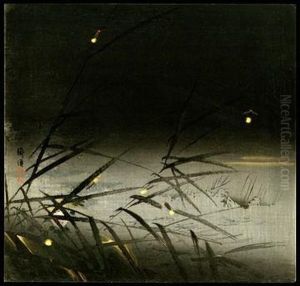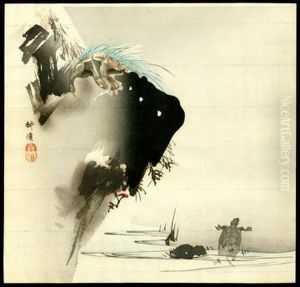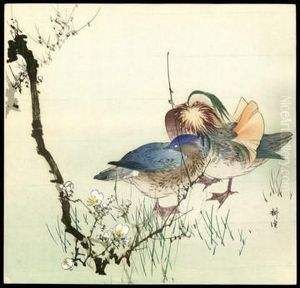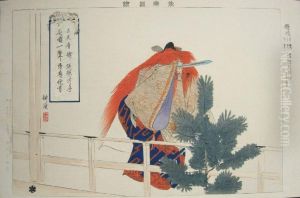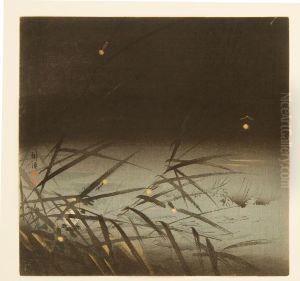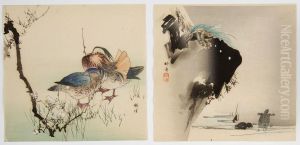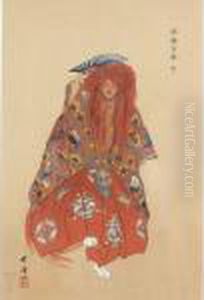Tsukioka Kogyo Paintings
Tsukioka Kogyo was a prominent Japanese artist, known for his significant contributions to the world of Nihonga (Japanese-style painting) during the Meiji, Taisho, and early Showa periods. Born on April 18, 1869, in Tokyo, Kogyo was the adopted son of Tsukioka Yoshitoshi, a master in Ukiyo-e painting, who was highly influential in the late Edo and early Meiji periods. This connection exposed Kogyo to the art world at an early age, fostering his development as an artist.
Kogyo's work is particularly noted for its focus on traditional Japanese subjects, especially those pertaining to Noh theater, a classical form of Japanese musical drama. He produced a vast amount of work depicting various Noh plays, contributing to the preservation and promotion of this traditional art form during a time of significant cultural change in Japan. His detailed and vivid illustrations not only captured the essence of Noh performances but also played a crucial role in documenting the rich cultural heritage of Japan for future generations.
Throughout his career, Kogyo utilized various mediums, including woodblock prints, paintings, and illustrations, to express his artistic vision. His style evolved over the years, reflecting both traditional Japanese aesthetics and the influence of Western art movements that were becoming increasingly popular in Japan during his lifetime. Despite the changing times, Kogyo remained deeply rooted in the traditions of Japanese art, which is evident in the classical beauty and elegance that characterize his works.
Kogyo's dedication to his art was recognized through numerous exhibitions and accolades during his lifetime. His works were exhibited in Japan and internationally, allowing him to establish a significant following both at home and abroad. Today, Tsukioka Kogyo is remembered as a key figure in the Nihonga movement and as an artist who played a vital role in the cultural and artistic history of Japan.
He passed away on July 30, 1927, leaving behind a legacy that has continued to influence and inspire artists and art lovers around the world. Kogyo's contributions to the art world, particularly his efforts to preserve the traditional aspects of Japanese culture through his works, have ensured his place as a respected and celebrated figure in the history of Japanese art.
